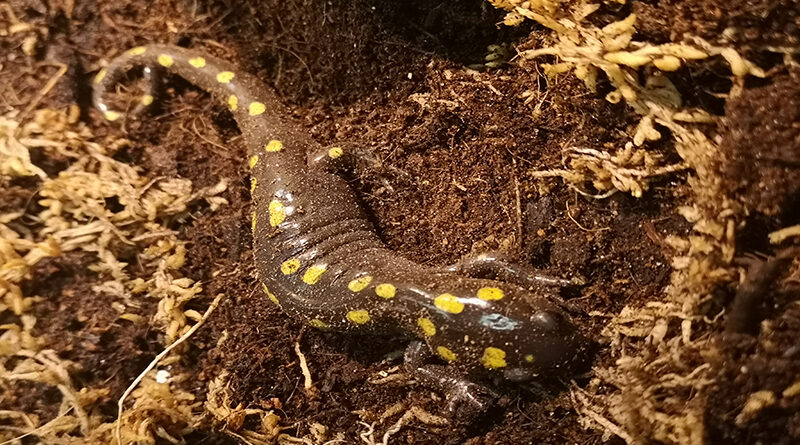Spotted Salamanders
To survive the cold winter months, animals use a variety of strategies. Some animals migrate great distances to reach warmer climates, some grow thick fur, and others bury themselves underground or in deep water to avoid freezing. Spotted salamanders make use of their surroundings to get through winter in Ontario.
Crawling into abandoned burrows made by small rodents like mice and voles, some spotted salamanders spend the winter below the frost line. Spotted salamanders may also squeeze into cracks in rocks or find a spot under logs or organic debris. No matter where they find themselves in winter, spotted salamanders will stay there until very early spring before emerging to find a mate.
In late March or early April, these amphibians will seek out wetlands or temporary ponds created by spring rain and snowmelt. Here they will find a mate and the female spotted salamanders will lay between 250 and 1000 eggs in shallow water. It will be just over one month before the aquatic larvae emerge from the eggs. Through the summer the larvae will transform into juveniles capable of travelling on land just like the adults.
Spotted salamanders spend much of their time hidden from sight, except when travelling to their breeding habitat. This summer you can see spotted salamanders here at Riverview Park and Zoo, the only free admission accredited zoo in Canada, as part of our seasonal Conservation Exhibit. Be sure to plan a visit to learn more about these, and other amazing local species found right here in our natural spaces.
Visit our website www.riverviewparkandzoo.ca to learn about and support the work at Riverview Park and Zoo.
Mary Kate Whibbs, Riverview Park and Zoo




